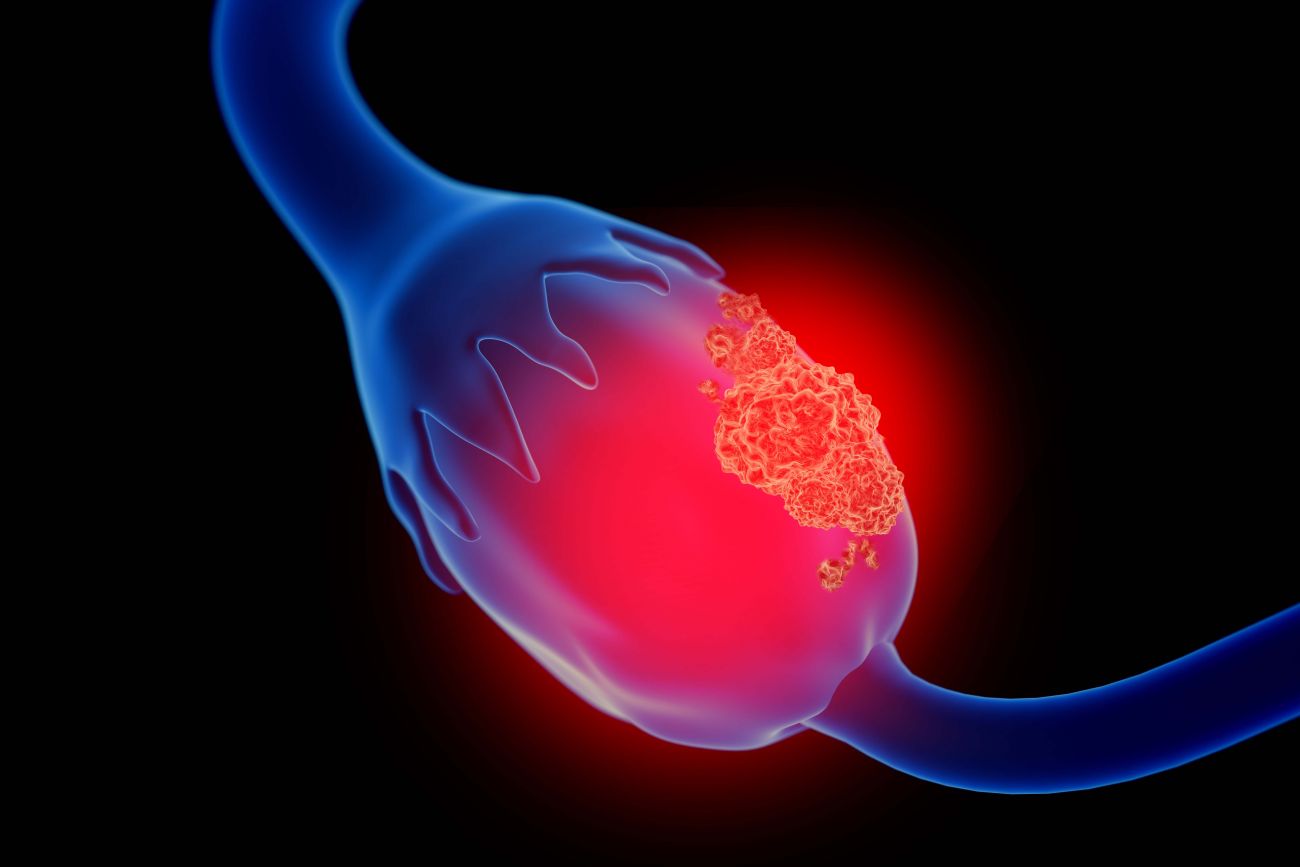The known risk factors for developing ovarian cancer are not as strongly correlated as are risk factors for other cancers, such as smoking and lung cancer, or sun exposure and skin cancer. However, women should know about the following factors, and be sure these are included in your medical history with your primary physician.
Factors that increase risk for ovarian cancer
Ovarian cancer risk is greater among women with a first degree relative (mother, sister, daughter) with ovarian cancer. Family history of breast and/or colorectal cancer (among the men in your family, too) increases risk for ovarian due to a gene mutation that can be inherited.
Of these factors associated with ovarian cancer, family history is the only known factor associated with significant increased risk. About 15 to 20% of women with ovarian cancer have a genetic predisposition.
- Family history of ovarian cancer, breast cancer and/or colorectal cancer. Your family history may signal an above-average or high risk for developing ovarian cancer if you have one or more of the following factors:
- You were diagnosed with breast cancer before age 45
- Male relative with breast cancer
- Personal or family history of ovarian, fallopian tube, or primary peritoneal cancer in a first- or second-degree relative (mother, sister, grandmother)
- Personal or family history of hereditary non-polyposis colorectal cancer (Lynch Syndrome) in a first- or second-degree relative
- Personal or family history of a BRCA1 or BRCA2 gene mutation, or mutation in another cancer susceptibility gene such as BRIP1, RAD51C or RAD51D
If your family history indicates an increased risk for ovarian cancer, we can help. Our High-Risk Ovarian Cancer Clinic offers guidance, screening, genetic counseling and testing and preventive options.
Genetic testing
Concerned about your cancer risk due to your personal or family history? A genetic consultation can give you the answers you need. We offer expert guidance and monitoring, preventive options and a unique opportunity to take charge of your health.
- Age. Ovarian cancer is most frequently diagnosed among women age 55 to 64, with a median of age 63. Ovarian cancer rarely occurs in women younger than 40, but may be diagnosed more commonly in younger women with a genetic predisposition.
- Obesity. A body mass index (BMI) of 30 or higher.
- Reproductive history. Never giving birth, or first full-term pregnancy after age 35.
- Menstrual history. Getting your first period at an early age and entering menopause at a late age.
- Endometriosis. This condition, in which endometrial tissue (uterine lining) develops outside the uterus, increases risk for some ovarian cancers.
- Fertility drugs. Some studies found that women who use clomiphene citrate (Clomid) for at least a year may increase risk for ovarian tumors. The risk was highest among women who did not get pregnant, so it remains unclear if the risk is due to infertility or the drug.
- Estrogen and hormone therapy. Women taking hormone therapy for menopause symptoms, especially taking estrogen alone (without progesterone) for many (5 to 10) years.
- Asbestos and talc exposure. Based on the available evidence, talc does not appear to increase risk for ovarian cancer. Some population-based studies found an increased risk with talc use, but hospital-based studies, and the Nurses’ Health Study found no increased risk even with increasing frequency of talc use. Talc is structurally similar to asbestos, a known carcinogen, and decades ago talcum powder was sometimes contaminated with asbestos. Exposure to asbestos does increase risk for ovarian and other cancers.
Factors that reduce risk for ovarian cancer
- Reproductive history. Women who give birth younger than age 26, and risk decreases with each subsequent birth. (Breastfeeding may lower risk, too.)
- Birth control use. Using oral contraceptives (the pill) or an injectable oral contraceptive (eg: Depo Provera).
- Gynecologic surgery. Hysterectomy (leaving ovaries intact) may reduce risk by one-third; tubal ligation may reduce risk by up to two-thirds.
